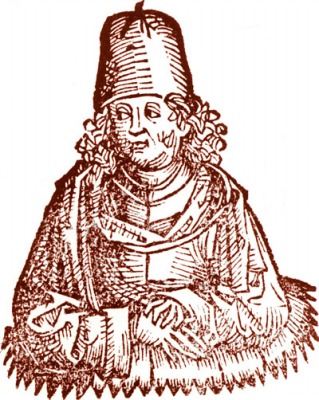
By Jonathan Evans
Herbal Information Specialist for the Herbarium
February is heart month. Every news report for the month is going to focus on something to do with cardiovascular health, which is why I am going to wait and give you herbal and supplement information on heart health at a time when you can concentrate on it.
Herbs and history
As I was doing some light reading recently, I came across an interesting article that reminded me of the wonders of nature, how far away we travelled and how much we have returned to the source. My thanks to the Ridgecrest Herbal Almanac for their observations and additions to my list of herbs – and the Doctrine of Signatures.
The Doctrine of Signatures dates back to the times of Greek physician, pharmacologist and botanist Pedanius Dioscorides (AD 40-90), Greek physician Aelius Galen (AD 130-216) and Roman naturalist Pliny the Elder (AD 23-79). It states that herbs resembling various parts of the body can be used to treat ailments of those parts.
Swiss physician Paracelsus (1493-1541) developed the concept that “Nature marks each growth ... according to its curative benefits”. Jacob Bohme (1575-1624) spread the doctrine, suggesting God marked the objects with a sign or signature. Botanist William Coles (1626-1662) supposed God made the herbs for the use of man. This concept was employed by herbalists of the Renaissance and was accepted through the latter part of the 19th century.
Our modern take
If you Google Doctrine of Signatures, you will most likely find a number of sources that pooh-pooh this rather “naive” doctrine and point out several plants that could lead to trouble, using the Doctrine of Signatures. All well and good, but – and there is a big but – that there is an awful lot of fact and science that shows this naive and backward doctrine actually is correct in many cases.
Form and function
Some examples of the wisdom regarding form and function found in the Doctrine of Signatures follow:
Eyebright (Euphrasia officinalis) is very helpful for a number of eye problems including conjunctivitis and blepharitis. The flowers resemble the human eye.
Boneset (Eupatorium perfoliatum) is used to treat breakbone fever (also known as Dengue fever, the mosquito born illness that causes severe muscle, bone and joint pain).
Hawthorn (Crataegus spp). The bright red berries remind us of blood, and the heart. Guess what? Hawthorn is one of the most scientifically validated of all herbal medicines, exerting specific benefit to the heart.
Goldenseal (Hydrastis canadensis). A strongly bitter and detoxifying herb, its greenish-yellow color reminds one of bile. Among its many uses, Goldenseal helps with problems of the stomach and intestines.
Mushrooms. A sliced mushroom looks like a human ear. Mushrooms contain Vitamins C, D and E, all of which help guard against cellular damage in the ears and blood vessels.
St. John’s wort. (Hypericum perforatum) St. John’s wort has many applications but one historical use was for wound healing and skin disorders. Hold a leaf up to the light and you will see tiny perforations that look like the pores in your skin. By the way, it is still used for wound healing.
Carrots. Slice a carrot and look at the cross section. What does it look like? Get the multi-colored carrots and you will really see what I mean. We all know carrots are high in beta carotene and other carotenoids, which protect the eye.
Ginger (Zingiber officinale). It resembles the stomach and is one of the best remedies for nausea, gas, and digestive disorders.
Kidney beans. Self-explanatory. Rich in magnesium and potassium, they help keep the kidneys free from build up.
Walnuts. Walnuts look like the human brain with all its folds and wrinkles. Walnuts are also high in Omega-3 fatty acids, which are very beneficial to the function of neurotransmitter receptors.
Panax ginseng. Also known as man root because it resembles a man. It has long been associated with longevity, stamina and potency.
Figs. Ever notice figs hang in twos and are full of seeds contained in a sac? Their appearance may be why they have long been associated with male fertility. Now it seems science says figs can actually increase sperm motility and quantity. (I just write about this stuff folks, I don’t make it up.)
A little knowledge...
Now, before you go out and start identifying every plant by body part, the Doctrine of Signatures is not foolproof. Many critics will point out some of the plants that could seriously impact your health. Agreed.
However, if you consider that Traditional Chinese Medicine was considered ancient 2,500 years ago and western herbal tradition dates back thousands of years, I think the collective observations of the world can be considered. I just find it terribly interesting that this idea of herbs for health – which can sometimes be looked at as superstition, witchcraft and religious mumbo jumbo – is now being verified and confirmed by modern science each and every day. Makes you think, doesn’t it?
— Jonathan
Send questions on botanical remedies to: Natures Rx: Jonathan Evans at herbarium258@gmail.com, or by regular mail to: The Herbarium, 264 Exchange St., Chicopee, MA 01013. If requesting additional info, include a self-addressed stamped envelope.